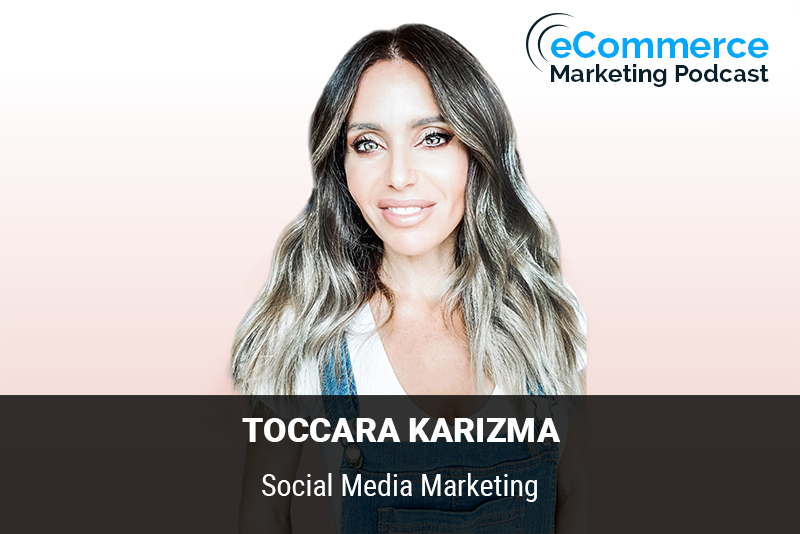
The eCommerce Marketing Podcast walks you through everything that goes into ecommerce marketing — from inbound marketing to paid advertising to conversions. Learn the strategies top marketing experts use to grow their businesses.
Marketing Strategies Revealed in this Episode:
- How an ecommerce business knows if social media paid ads on Facebook and Instagram are right for them
- Some effective ways to come up with the right messaging and targeting the right demographics on social media
- What an average ecommerce business creates a Facebook group about that makes sense
- Examples of businesses that have been successful with social media ads and what specifically they have done to gain success

In this episode of the eCommerce Marketing Podcast, host Arlen Robinson interviews Toccara Karizma, a highly sought-after digital marketing consultant and online business growth expert. Toccara is the founder of Karizma Marketing, a full-service digital marketing agency that helps 7-figure plus eCommerce brands grow through various marketing channels, including paid ads, email marketing, and SEO. She also created Social Savvy, a digital course designed to help business owners quickly generate revenue from profitable Facebook ads. Toccara shares her extensive experience in the digital space, offers insights into social media marketing, and provides actionable strategies for eCommerce businesses to succeed with paid ads on Facebook and Instagram.
Key Takeaways:
- Introduction and Background of Toccara Karizma (0:00 – 4:30)
- Toccara’s journey from starting her own eCommerce business in 2007 to founding Karizma Marketing.
- Expertise in growing brands through an omni-channel approach.
- Is Social Media Marketing Right for Every eCommerce Business? (4:31 – 8:30)
- Importance of having a solid foundation before diving into paid ads.
- The necessity of a converting website, clear unique selling proposition, and product-market fit.
- Effective Messaging for Social Media Ads (8:31 – 14:30)
- Using the “Customer’s Own Words” (COW) method to develop effective ad copy.
- Analyzing customer reviews and competitors’ ads for insights.
- Resources like Amazon reviews, Facebook Ad Library, and Milled.com for inspiration.
- Creating and Leveraging Facebook Groups (14:31 – 19:30)
- Building community and solving problems through Facebook groups.
- Examples of successful groups around empowerment and customer support.
- Importance of fostering an intimate relationship with customers.
- Successful Social Media Ad Campaigns (19:31 – 24:30)
- Strategies such as giveaways, analyzing analytics, and bundling products.
- Surprise product offerings as a top-selling strategy.
- Making data-driven decisions to optimize campaigns.
Guest Information:
Toccara Karizma
Founder and CEO of Karizma Marketing
Instagram: Toccara Karizma
Facebook: Toccara Karizma
YouTube: Toccara Karizma
For digital marketing services and insights, visit Karizma Marketing.











